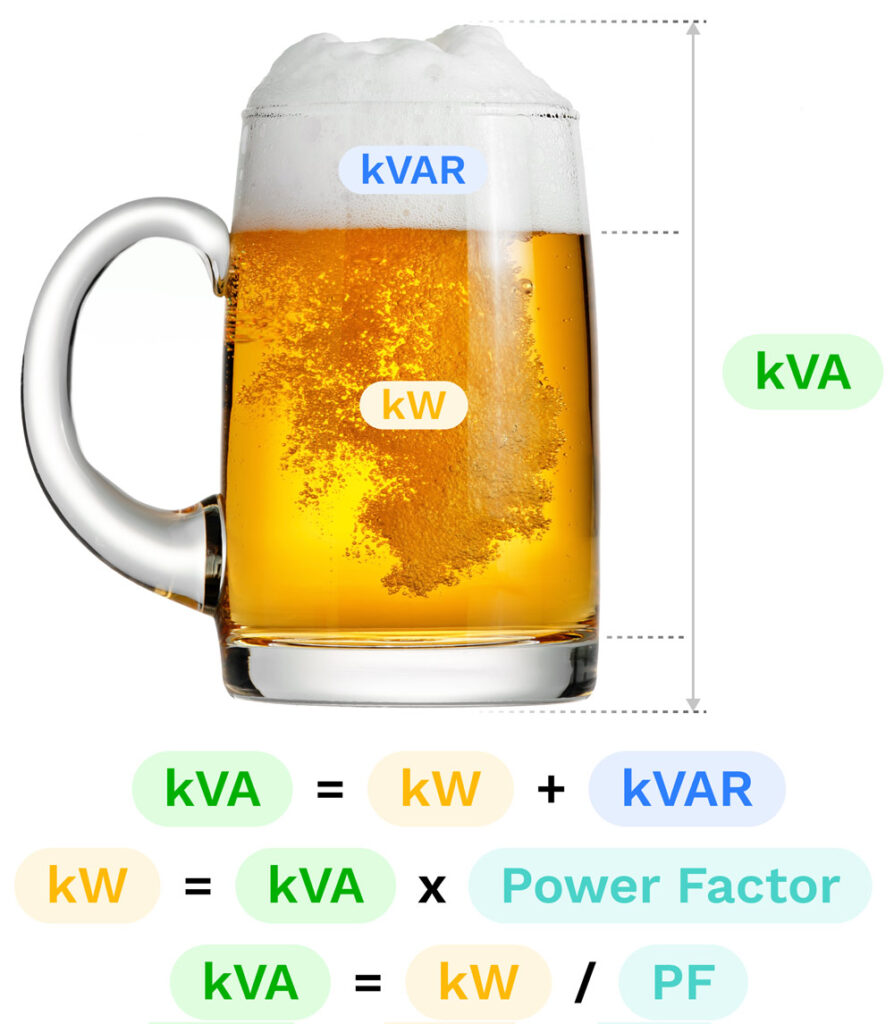What could electricity and power factor (PF) possibly have in common with a frosty glass of draft beer? Here, let us show you:

Here are the ingredients of this tall, cold, refreshing analogy:
kW (Kilo Watt):
Imagine your glass of beer. The beer itself is like KW.
kVA (Kilo Volt Ampere):
This is the whole glass, including the foam on top. The entire capacity of the glass is KVA.
kVAR (Kilo Volt Ampere Reactive):
Ah, the foam on our cold glass of draft beer! It’s fluffy and doesn’t really quench our thirst. That foam is like KVAR. It doesn’t do any useful work, but it’s there.
Power Factor (PF):
Power Factor (PF) is like checking how well we’re enjoying our beer. If we’re sipping the beer (using KW) and not drinking any foam (KVAR), our PF is good. If we’re just drinking the foam and not the beer, our PF isn’t great. It is expressed as a percentage of efficiency. 100% or 1 is perfect.
Next time you see a glass of draft beer, remember the acronyms KW, KVA, KVAR, and PF – they’re part of the ingredients that make our electrical system work!
What’s Power Factor (PF) Correction?
Power factor correction is like adding an extra “special ingredient” to your beer that minimizes foam. Power factor correction (PFC) is a way for you to maximize the amount of beer (real power) in your glass (electrical system) by minimizing the foam (reactive power). Essentially, PFC allows you to get more value (power) out of the same amount of electricity, reducing your overall energy consumption by up to 30% or more.


